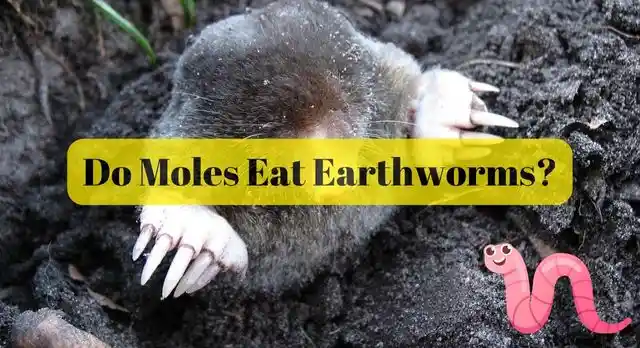Do Moles Eat Earthworms? The Truth Revealed
Moles are fascinating creatures that have captured the curiosity of many gardeners and outdoor enthusiasts. These small, burrowing mammals are known for their intricate tunnel systems and ability to quickly transform a pristine lawn into a network of unsightly mounds. One question that often arises when discussing do moles eat earthworms. In this article, we will explore the feeding habits of moles and provide you with the truth about their diet. So, let’s dig in!
Understanding the Diet of Moles
Before delving into whether moles eat earthworms, it’s important to understand their overall diet. Moles are insectivores, which means they primarily feed on insects, grubs, and other small invertebrates. Their diet consists of a wide range of creatures found beneath the surface of the soil, making them highly adapted to subterranean life.
While insects and grubs form the bulk of a mole’s diet, they are not exclusively limited to these food sources. Moles are opportunistic feeders and will consume any small, soft-bodied creatures they come across during their underground foraging. This includes earthworms, which are a commonly encountered food source due to their abundance in many soil types.

Moles and Earthworms: A Nutritional Delight?
It is true that moles do eat earthworms, but their diet extends far beyond these wriggling creatures. Earthworms provide moles with a significant source of nutrition due to their high protein content. The consumption of earthworms is especially prevalent during certain times of the year when other food sources may be scarce.
While moles do consume earthworms, they do not rely solely on them for sustenance. These resourceful mammals have adapted to survive on a diverse range of underground prey, ensuring their nutritional needs are met even in the absence of earthworms.
How Many Worms Does a Mole Eat?
Moles have a voracious appetite for worms and other small invertebrates. On average, a mole can consume anywhere from 50 to 100 percent of its body weight in worms each day. This means that a single mole can eat several dozen worms in a 24-hour period. Their high metabolism and constant digging activities require a substantial intake of food, including earthworms.
Do Moles and Voles Eat Earthworms?
Yes, both moles and voles have been known to eat earthworms. Moles, being insectivores, have a broader diet that includes a variety of invertebrates, such as worms, grubs, and insects. Earthworms are a valuable food source for moles due to their high protein content.
On the other hand, voles, which are small rodents often mistaken for moles due to their similar tunneling behavior, may occasionally feed on earthworms. However, voles primarily feed on plant material, including roots, bulbs, and grasses. They are not as reliant on earthworms as moles are.
Moles as Ecosystem Engineers
Moles may have a reputation for wreaking havoc on lawns and gardens, but it’s important to recognize their ecological role. Moles are considered ecosystem engineers due to their burrowing behavior. Their tunnel systems aerate the soil, improve drainage, and promote the decomposition of organic matter. Furthermore, by feeding on insects and grubs, moles help control populations that can be detrimental to plant health.
While the presence of moles may result in unsightly mounds, it’s worth considering the positive impact they have on soil health and overall ecosystem balance. By understanding their feeding habits, we can develop a more nuanced perspective on these fascinating creatures.
Tips for Managing Mole Activity
If you find mole activity in your lawn or garden and wish to manage it, here are some tips to consider:
- Physical Barriers: Install wire mesh or hardware cloth barriers underground to prevent moles from accessing specific areas.
- Raised Beds: Create raised beds with a barrier beneath to discourage moles from tunneling into your garden.
- Natural Predators: Encourage the presence of natural predators like owls, hawks, or snakes that feed on moles.
- Trapping: Consider humane trapping methods if the mole activity becomes too disruptive.
- Garden Maintenance: Maintain a well-drained lawn, as moles are less likely to inhabit dry or compacted soil.
By implementing these strategies, you can strike a balance between managing mole activity and maintaining a healthy ecosystem in your outdoor spaces.
Key Takeaways
- Moles are insectivores that primarily feed on insects, grubs, and other small invertebrates.
- While moles do eat earthworms, they have a diverse diet and are not solely reliant on them.
- Moles play an important role as ecosystem engineers by aerating soil and controlling insect populations.
- Managing mole activity can be achieved through physical barriers, natural predators, and garden maintenance.
- By understanding the feeding habits and ecological contributions of moles, we can foster a harmonious coexistence with these underground dwellers.
Next time you encounter a mole or see the telltale signs of their presence, remember that they are more than just lawn disruptors. These fascinating creatures contribute to the health and balance of ecosystems, and understanding their behavior can help us appreciate their role in the natural world.
